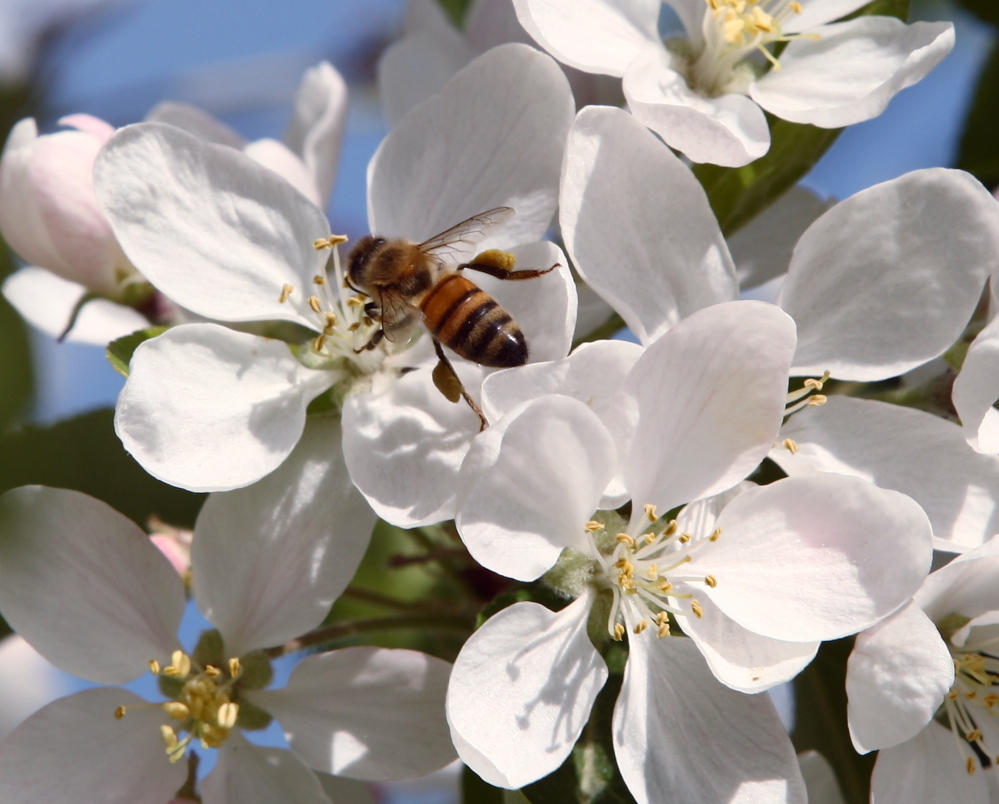WASHINGTON — The White House and federal officials are coming to the rescue of the lowly honeybee, pumping money and extra resources in an attempt to avert continued, major losses among the nation’s buzzing pollinators.
Citing population declines in the pollinators that help sustain many of the nation’s crops, the U.S. Department of Agriculture announced on Friday conservation incentives for farmers and ranchers in five states – Michigan, Minnesota, North Dakota, South Dakota and Wisconsin – who establish new habitats for declining honeybee populations. More than half of the commercially managed honeybees are in those five states during the summer, the department said.
“American agricultural production relies on having a healthy honeybee population,” USDA Secretary Tom Vilsack said in announcing the program.
The department says that more than $15 billion worth of agricultural products – including more than 130 fruits and vegetables – depend on the services of bees for pollination. In California, for example, almonds are almost exclusively pollinated by honeybees, and the state’s industry, which is responsible for 80 percent of global almond production, requires the pollination services of about 1.4 million beehives annually.
But the population of those insects has plummeted in recent decades. The number of managed honeybee colonies in the United States has declined from 6 million colonies – beehives – in 1947 to 2.5 million today. Since 2006, commercial beekeepers in the United States have seen honeybee colony losses over the winter months that are far higher than historic rates.
The reasons, however, are something of a mystery.
According to federal officials, it’s due in part to the loss of natural forage, mite infestations and diseases, and exposure to certain pesticides. What’s known as “colony collapse disorder” results in a rapid, unexpected and catastrophic loss of bees in a hive.
According to the Department of Agriculture, honeybees are not native to the continent but came with European settlers. The losses of recent years are unusual and worrisome, but similar events have occurred before.
At the turn of last century in a region of Utah, for example, 2,000 colonies were lost to an unknown “disappearing disease” after a “hard winter and a cold spring,” according to the department. In the mid-1990s, Pennsylvania beekeepers lost 53 percent of their colonies without a specific identifiable cause.
To help avert continued declines, the White House and the USDA also established a “Pollinator Health Task Force,” led by Agriculture Department and Environmental Protection Agency officials. The group will research the problem and within six months develop a “National Pollinator Health Strategy.”
The other steps announced by the department Friday include a beefed-up conservation program that allows for managing or replacing existing vegetation to provide honeybees more blooms from which to collect nectar and pollen as they go about their pollination chores.
Send questions/comments to the editors.



Success. Please wait for the page to reload. If the page does not reload within 5 seconds, please refresh the page.
Enter your email and password to access comments.
Hi, to comment on stories you must . This profile is in addition to your subscription and website login.
Already have a commenting profile? .
Invalid username/password.
Please check your email to confirm and complete your registration.
Only subscribers are eligible to post comments. Please subscribe or login first for digital access. Here’s why.
Use the form below to reset your password. When you've submitted your account email, we will send an email with a reset code.